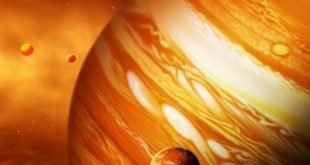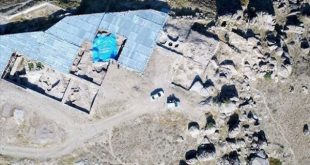 Experts have recovered DNA of the Scythian horses, and made an amazing discovery.
Experts have recovered DNA of the Scythian horses, and made an amazing discovery.
Scientists have reconstructed the DNA of the Scythian horses, whose remains were recently found in Kazakhstan, and used their genomes to uncover the secrets of the famous breeders of this ancient people and get the first photos of their horses.
“In our work, we wanted to go beyond the myth that the Scythians were aggressive warriors, drinking the blood of enemies from their skulls. We wanted to understand how these people establish that unique bond with horses, which became their defining feature and hallmark,” says Louis Orlando (Ludovic Orlando) from the University of Copenhagen (Denmark).
Man’s best friend
It is believed that man domesticated the horse in about 3.5-4 thousand years ago. First, the people who raised horses for meat, and then began to use in the household. The alleged ancestor of the domestic horses are considered as existing Przewalski’s horses, and extinct in the 20th century, the Tarpan.
Five years ago, Orlando and his colleagues made a surprising discovery – they were able to extract and decode the scraps of DNA from the bones of horses that had lain in the permafrost of Alaska, about 700 thousand years. Her genetic material was preserved unusually well, that gave scientists the idea that the burial of horses in similar conditions in southern Siberia and Northern Kazakhstan, in the famous tombs of the Scythians, can be used for disclosing the secrets of domestication of horses and their evolution.
The Scythians, as told by a geneticist, have lived on the territory of the Central Asian steppe and the Altai mountains about four thousand years ago, and they were one of the first people who managed to tame horses and learn to ride them on horseback. Given the proximity of the homeland of the Scythians and habitat of Przewalski’s horses, many scientists believe that the anatomy and the device DNA of the Scythian horses can be the most close to the assumed ancestor of all domestic horses.
Recently, the authors of the article was lucky – in Tuva, in burial Arzhan-2, were found the remains of several hundred Scythian horses buried with their presumed owners in the permafrost. A similar find was made near the village of Berel in the North-East of Kazakhstan, where the Kazakhstan and Russian archeologists found undisturbed mound with the remains of 13 horses, buried with the alleged local leader of the Scythians.
Secrets of the Scythian breeders
Thanks to similar burial conditions, Orlando and his colleagues under the guidance of renowned paleogenetic Eske Willerslev managed to recover and to “read” the genomes from 13 Scythian horses – two stallions of Tuvan Argens and 11 horses from Berel in Kazakhstan. Their DNA, the scientists compared the genomes of modern horses, Przewalski’s horses, an ancient 700-year horses and mares aged at 4 thousand years, whose remains were found in the vicinity of Chelyabinsk.
Good quality “resurrected” genome has allowed scientists to discover many interesting mysteries of the life of the Scythians and their Pets. For example, it was found that the Scythian horses were very diverse – among them were both black, and he has Bay, brown and “cream” horses, and even horses, reminiscent in its color spotted Orlov trotters.
These horses, as they note, were carriers of mutations increasing bone thickness and cross country improve their quality and ability to walk short distances. This suggests that the Scythian breeders selected only the quickest, agile and frisky horses. Another interesting feature was the increase in the activity of genes associated with milk production, which Scythians used for the production of koumiss and other drinks.
Interestingly, all the horses from Kazakhstan burial had each other cousins that talks about how the Scythians might or actively trade in horses, or to select only the most beautiful and fastest horses to accompany dead chiefs to another world. Another explanation for this – the Scythians did not interfere in the normal life of the herds of their horses, helping them to avoid degeneracy and inbreeding.
All this, as scholars have noted, casts doubt on the presumption that all modern horses are descended from one or several ancestors, whose number was extremely small. Apparently, the loss of genetic diversity occurred not in the process of domestication, and after him, about 2.3 thousand years ago, when breeders of the ancient world began to take perfect, in their view, the breed.
© 2017, paradox. All rights reserved.




